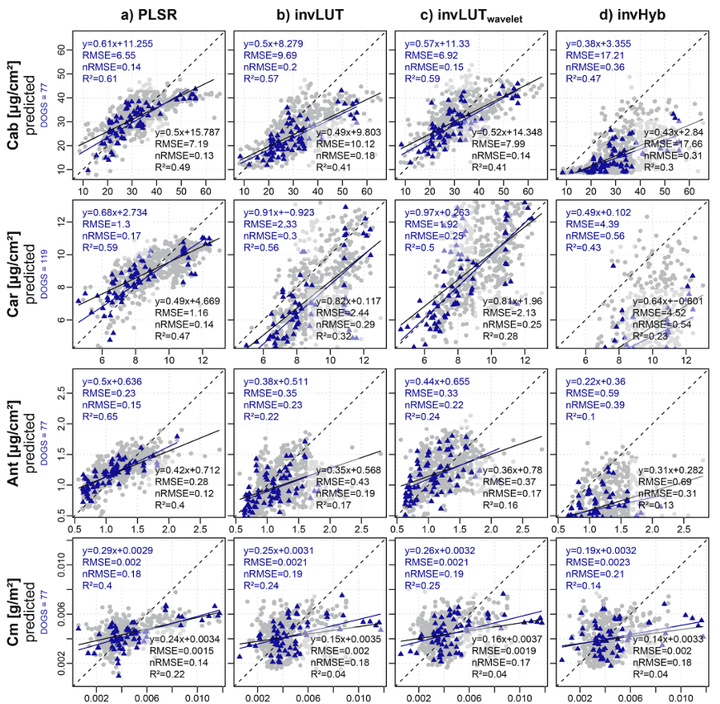The Retrieval of Plant Functional Traits from Canopy Spectra through RTM-Inversions and Statistical Models Are Both Critically Affected by Plant Phenology

Abstract
Plant functional traits play a key role in the assessment of ecosystem processes and properties. Optical remote sensing is ascribed a high potential in capturing those traits and their spatiotemporal patterns. In vegetation remote sensing, reflectance-based retrieval methods are either statistical (relying on empirical observations) or physically-based (based on inversions of a radiative transfer model, RTM). Both trait retrieval approaches remain poorly investigated regarding phenology. However, within the phenology of a plant, its leaf constituents, canopy structure, and the presence of phenology-related organs (i.e., flowers or inflorescence) vary considerably – and so does its reflectance. We, therefore, addressed the question of how plant phenology affects the predictive performance of both statistical and RTM-based methods and how this effect differs between traits. For a complete growing season, we weekly measured traits of 45 herbaceous plant species together with hyperspectral canopy reflectance (ASD FieldSpec III). Plants were grown in an experimental setup. The investigated traits comprised Leaf Area Index (LAI) and the leaf traits chlorophyll, anthocyanins, carotenoids, equivalent water thickness, and leaf mass per area. We compared the predictive performances of PLSR models and three variants of PROSAIL inversions based on (1) all observations and based on (2) a phenological subset where flowering plants were excluded and only those observations most suitable for modeling were kept. Our results show that both statistical and RTM-based trait retrievals were largely affected by phenology. For carotenoids for example, R2 decreased from 0.58 at non-flowering canopies to 0.25 at 100% flowering canopies. Temporal trends were diverse. LAI and equivalent water thickness were best estimated earlier in the growing season; chlorophyll and carotenoids towards senescence. PLSR models showed generally higher bias than the PROSAIL-based retrieval approaches. Lookup-table inversion of PROSAIL in combination with a continuous wavelet transformation of reflectance showed highest accuracies. We found RTM-based retrieval not to be as accurate and transferable as previously indicated. Our results suggest that phenology is essential for accurate retrieval of plant functional traits and varies depending on the studied species and functional traits, respectively.